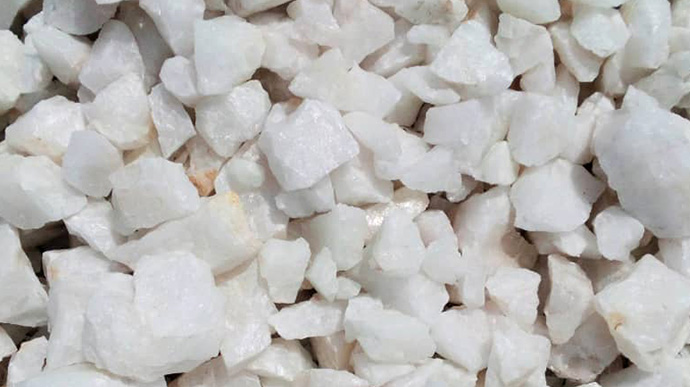The Impact of Quartz on Crushing Equipment
Quartz, known for its hardness and abrasive properties, poses unique challenges to crushing machinery. As a common material in various industries, including construction, mining, and glass manufacturing, quartz demands highly durable and specialized equipment to effectively handle its properties without compromising machinery efficiency.
Effects of Quartz on Crushing Equipment
- Increased Wear and Tear
Quartz has a Mohs hardness of 7, which places it among the harder minerals and makes it more abrasive to equipment. Prolonged exposure to quartz can lead to faster degradation of wear parts, such as jaw plates, cone crushers, and hammers in impact crushers. The high abrasion accelerates the wear process, necessitating frequent maintenance or replacement, which can be costly and time-consuming. - Reduced Crushing Efficiency
Due to its hardness, quartz can cause equipment to operate less efficiently. Crushers must work harder to break down the material, often requiring higher energy consumption and reducing throughput. This increased energy demand can impact overall productivity, particularly in high-volume operations. - Possible Blockages
Quartz can sometimes cause blockages in crusher openings or along conveyor belts, especially if it is processed in larger sizes. Blockages can lead to unplanned downtimes and slow down production rates, affecting the consistency of operations and potentially causing delays in output.

Strategies for Managing Quartz Crushing
- Using High-Durability Materials
Opting for wear-resistant materials for crusher components, such as manganese steel or high-chrome alloys, can help to mitigate the abrasive impact of quartz. These materials enhance durability and extend the service life of equipment, reducing the need for frequent repairs or part replacements. - Regular Maintenance and Inspections
Consistent inspection and maintenance routines are essential when working with abrasive materials like quartz. Routine checks on wear parts and lubrication can prevent unexpected breakdowns and help maintain operational efficiency, ultimately extending the lifespan of the crusher. - Optimizing Crushing Methods
Selecting the right crusher type for quartz can significantly improve results. For example, cone crushers and impact crushers are often preferred for harder materials, as they offer better control over particle size and allow for finer crushing without excessive wear. Ensuring the optimal feed size can also minimize strain on the machine.
Conclusion
Crushing quartz can pose several operational challenges, from increased wear to potential blockages and reduced efficiency. However, using high-durability materials, adhering to regular maintenance practices, and optimizing equipment choices can help overcome these obstacles. Taking these considerations into account can significantly improve productivity and extend the service life of crushing machinery when processing quartz.
- > Vertical Shaft Impact Crusher for Fine Crushing: Benefits, Applications, and Maintenance Tips
- > Optimizing Gold Mining Operations with Gyratory Crushers
- > A Deep Dive into the HST Hydraulic Cone Crusher
- > Jaw Crusher with a Capacity of 80 Cubic Meters Per Hour: Applications and Benefits
- > Versatility of the XS Series Sand Washer for Various Materials
- > The Role of Vibrating Screens in Iron Ore Washing: Enhancing Efficiency in Ore Processing
- > Solving High Cone Crusher Maintenance Frequency in Copper Ore Crushing
- > The Impact of Quartz on Crushing Equipment
Hot Product


Online




Message
